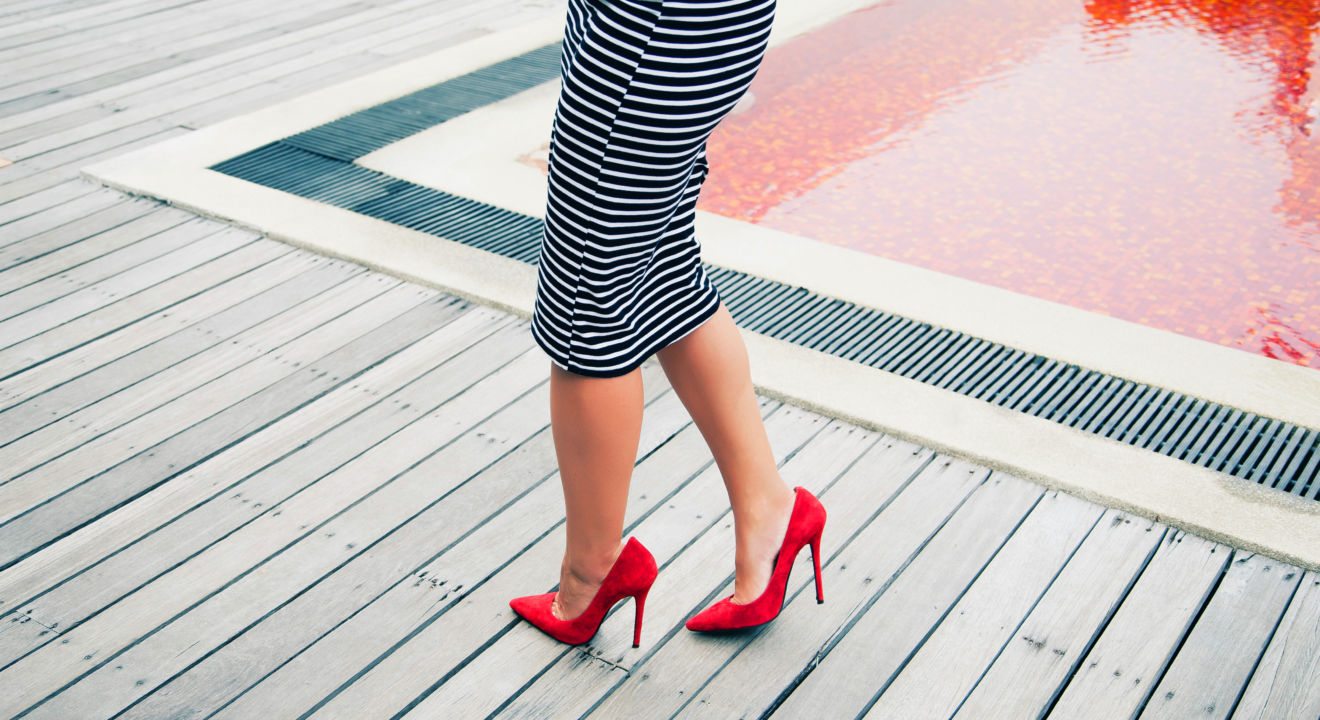Style September 9, 2016


Over the years, women’s heels have grown as tall as the list of long-fought for liberties.
In the 16th century, Chopines were originally introduced in Turkey as a unisex footwear style that allowed aristocrats to walk through the waste on their pre-sewer streets without ruining their skirts or shoes. The irony is rich – the world’s most uncomfortable shoe style was originally crafted for function, not fashion.
Fast forward to the 17th century and the formerly unisex shoe become more gendered. A 1670 edition to the Costume collection at the Discovery Museum features an example of “the first Louboutins” – a red-heeled shoe of the same kind stylized by King Louis XIV, who, according to the BBC, “supplemented his stature by a further 4in with heels.”
Venetian women wore chopines – some as tall as 20 inches – for a dual purpose: to keep skirts away from muddy streets and to display a grandeur and elegance associated with the nobility.
A division soon became apart around this time. Tall shoes no longer became unisex. After all, men’s shoes had to be more practical, as they needed to go places. Women’s shoes did not, as they were less likely to leave the home.
In 1793, however, the craze for heightening heels began to decline. Following the French Revolution, heel heights were limited to two inches; anything higher was considered needless opulence.
But when the style experienced a resurgence a hundred years later, the heel found a new home with a diverse demographic.
The style that formerly symbolized status and aristocracy was now a cultural emblem of erotica. Photographers began adorning pin-up girls with uncomfortable sky-high heels. Although no one wanted to learn how to walk in those heels, they were definitely perfect for posing. And following the Great War, women wanted to emulate the sexy pin-up women, whose popularity skyrocketed around this time. The heel made its way into mainstream fashion again.
And true to the way history and fashion seem to repeat, heels found their way into unisex fashion once more. Heel designs became thicker like chopines of the past and found audiences with men and women of the 1960s and 1970s in the form of low-heeled cowboy boots or what some may fondly remember as “elevator shoes.”
The gender-neutral trend of the 1970s coincided with the burgeoning women’s rights movement. The heel, with its history of association with power and status, now shared its symbolism with women – and even men – who had their choice of empowerment via enduring 17th century status symbolism or WWI-era erotica.
By the ’80s, heels had fallen out of favor with men. And here’s when heel heights really began to skyrocket as an iconic cultural trend.
Although an early version of the stiletto was worn by French entertainer Mistinguett in 1940, the stiletto did not cross over into mainstream American culture until much later. Even a small, skinny heel considered tame by today’s standards was stigmatized for its roots in pin-up culture.
This changed markedly by 1993, when Vivienne Westwood designed a blue, mock-crocodile skin nine inch platform heel called the Super Elevated Gillie. The heel was so high that it caused iconic supermodel Naomi Campbell to immortalize the shoe – which has since been displayed in a Bowes Museum exhibition – by falling in them on the runway in Paris.
From the chopine’s functional beginnings to the Westwood wonder, heel heights have only grown higher and less practical. At the same time, the style has woven its way through a history of gender narratives and a woman’s ability to shape herself. Whether she chooses to be strictly sexy, charmingly aristocratic or both, a woman is in full control of her footwear.
In 2016, Westwood’s words before her 1993 Parisian show still echo. “Shoes must have very high heels and platforms to put women’s beauty on a pedestal.”
And over the years, her demand for respect and for a recognition of her right to shape her own self-image have joined beauty on the pedestal, too.